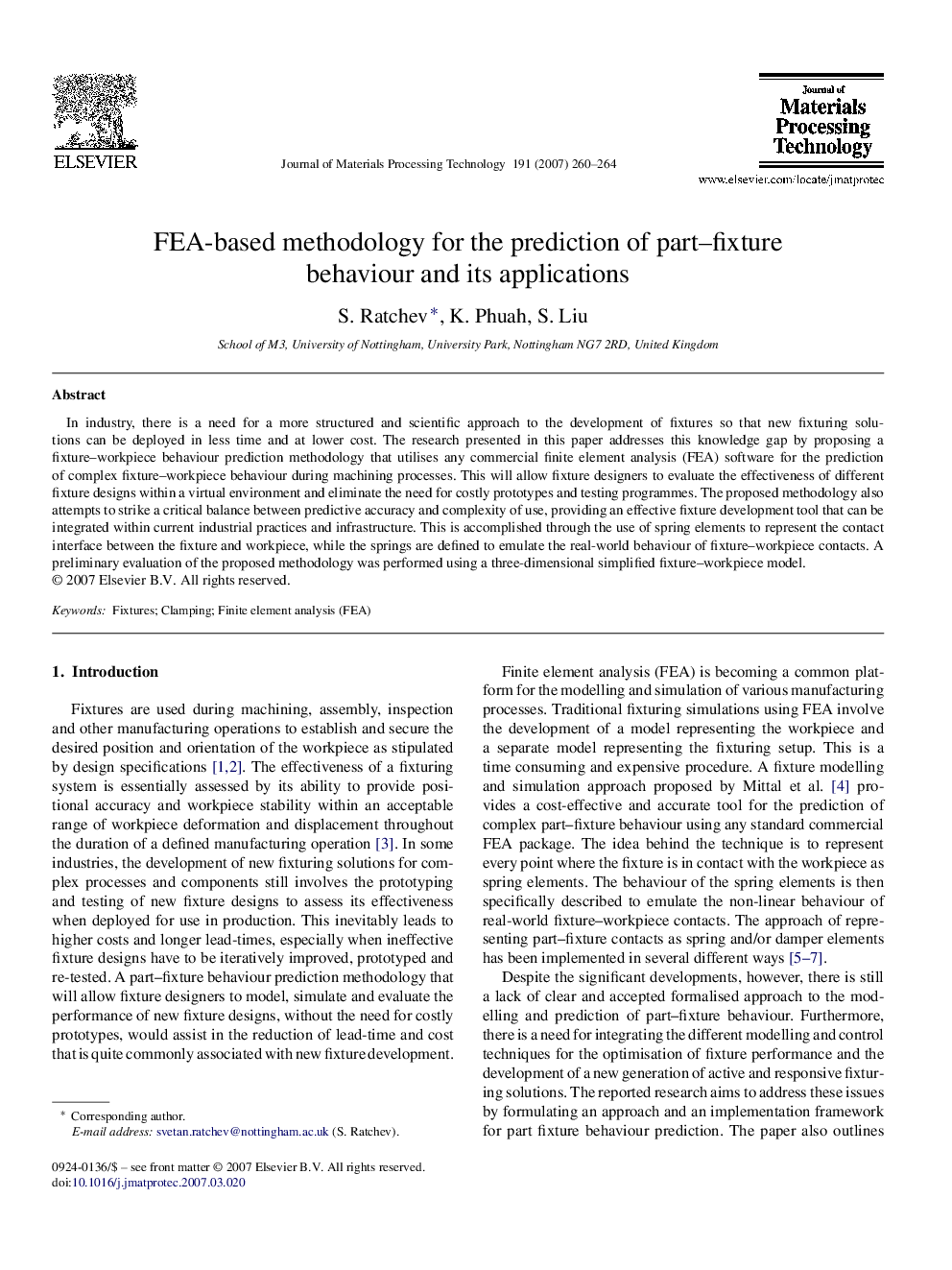| کد مقاله | کد نشریه | سال انتشار | مقاله انگلیسی | نسخه تمام متن |
|---|---|---|---|---|
| 793956 | 1466774 | 2007 | 5 صفحه PDF | دانلود رایگان |

In industry, there is a need for a more structured and scientific approach to the development of fixtures so that new fixturing solutions can be deployed in less time and at lower cost. The research presented in this paper addresses this knowledge gap by proposing a fixture–workpiece behaviour prediction methodology that utilises any commercial finite element analysis (FEA) software for the prediction of complex fixture–workpiece behaviour during machining processes. This will allow fixture designers to evaluate the effectiveness of different fixture designs within a virtual environment and eliminate the need for costly prototypes and testing programmes. The proposed methodology also attempts to strike a critical balance between predictive accuracy and complexity of use, providing an effective fixture development tool that can be integrated within current industrial practices and infrastructure. This is accomplished through the use of spring elements to represent the contact interface between the fixture and workpiece, while the springs are defined to emulate the real-world behaviour of fixture–workpiece contacts. A preliminary evaluation of the proposed methodology was performed using a three-dimensional simplified fixture–workpiece model.
Journal: Journal of Materials Processing Technology - Volume 191, Issues 1–3, 1 August 2007, Pages 260–264